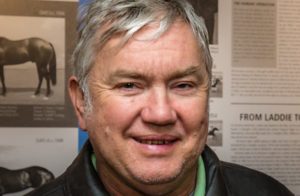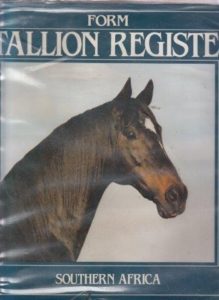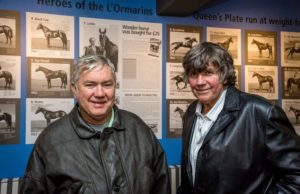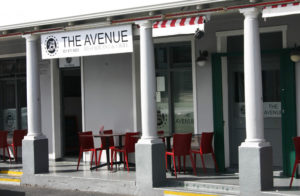The first time I chatted to Charles Faull, he quoted a line from one of my articles at me. It took me a little by surprise, but I have subsequently learnt that Charles has a brain the size of a planet. His incredible intellect, unending thirst for knowledge and the capacity to retain and recall minute detail, border on genius. If he is occasionally impatient with those who struggle to absorb the detail and make the connections that he finds so obvious, it’s only because of a deep conviction that unless drastic action is taken, racing has little time left.
The Avenue
We meet at 47 Second Avenue in Harfield Village. It is a restaurant called The Avenue and is run by Charles’ close friend Tony Mason, who most will remember from his Hard Rock days. Tony and Charles have teamed up to create a little oasis of racing history in the premises adjacent to The Avenue, which is known as ‘Heroes’. It is a tribute to the greats of the South African turf and to Charles’ pet project – the Queen’s Plate – in particular. The history of the race is reverentially recreated across the restaurant walls through exquisite photographs and fascinating snippets of racing folklore. What could so easily have been a ‘sports bar’ is a tasteful, carefully considered work of art. In this hallowed space, through Charles’ eyes, racing has been restored to the Sport of Kings.
Charles
It would be impossible to condense Charles into something as hopelessly inadequate as a column, but if one were to try, then you would have to start with the words passion, energy and racing. We arrive uncharacteristically early, but the vantage point from our cosy seats offers an uninterrupted view of Charles bursting into the room, laden with files, magazines and an assortment of neatly ordered paperwork under one arm and a bottle of wine under the other. Charles starts as he means to go on – at full bore.
When it comes to racing, Charles practically bristles with history, facts, figures and family connections that go back generations. Charles does not merely look at a horse, or consider a race – his insight and depth of understanding encompasses everything from the pedigree, to the history of the stud farm, an in depth knowledge of the trainer, to the psyche of the jockey – you can practically see the synapses firing. He has strong opinions and ideas – which have seen him cast aside from the industry he wants so passionately to help, but four decades of railing against the industry’s decision makers has not dimmed his fire in the slightest. It’s heartening and inspiring, although at the same time, more than a little depressing that we have allowed such a prodigious intellect to go to waste.
How it all started
But where did this force of nature come from? Charles is the son of the late Dr George Faull, a specialist vet and an acknowledged authority on horses in his day. While very few vets make it into the history books, Dr Faull is perhaps most fondly remembered for his association with Terrance Millard’s first Queen’s Plate winner, Laddie. Charles recounts the story.
The legend of Laddie
“There was this guy by the name of Mr Beyer who bred horses on the Cape flats. Terrance Millard had just started out as a trainer and needed to make up the quota of horses for his license, so went to see Mr Beyer with the idea of purchasing some suitable juveniles. Terrance spotted this striking-looking chestnut over the fence, which took off down the paddock, making a terrible respiratory noise. It was Laddie. He’d been leased to Sonny Whiteford and been a fairly useful sprinter, but was such a bad roarer that Sonny sent him back. Of course, instead of buying yearlings, Terrance invested £25 in Laddie.”
“In those days, a hobday was a fairly new procedure, but my Dad, Dr Burgess and Prof Quinlan had performed a successful operation on Mowgli. The op cost £25 and Terrance didn’t have the money, so he traded them a share in the horse. Under Terrance’s care, Laddie won 2 sprints, but then seemed to lose enthusiasm. Terrance was of the opinion that the horse was feeling his joints, so he gave him a break and walked him in the sea every day. He came back into work as a 7yo, but seemed to have lost his pace, so Terrance suggested trying him around the turn. He sent him out over 1800m in a B Division handicap at Milnerton. Dad was the official vet and wasn’t allowed to bet, but my mom had gone along and Terrance was quite bullish about their chances, so she went off to the bookie with her £10 housekeeping money and got 50-1. Laddie held on to win by a nose. A week later, Terrance tried him over 2000m and Laddie won well. The next week Laddie took on A division company over 1800m and won by 3.5 lengths. Seven days later, he lined up for the Queen’s Plate.”
“Syd Garrett, still regarded as the best trainer South Africa has ever seen, saddled Fair Weather who was hot pot favourite. Up the straight, Fair Weather put in his effort and Laddie ran him down and won! For a 26 year old fledgling trainer and a rehab horse to go from the B Division to winning the Queen’s Plate in 21 days remains one of the greatest training feats in our history.”
Why racing?
“I met this beautiful girl at a club called Rhodesia By The Sea. She gave me her number and we started dating. She lived in Milnerton and liked to take the jackpot. She taught me how to do it and I started collecting race cards and keeping notes on the form. Back then there were fairly standard races at every meeting – a Feature, a B Div, Progress and Graduation. I gradually developed an understanding of form and the weight for age scale. It didn’t take long to work out that form was merely the applied study of trend and formula co-mingled with pedigree, so I wanted to learn more about breeding. Edmund Nelson lived down the road and was a close family friend and he was kind enough to lend me his books. My father was horrified – he didn’t want me to have anything to do with racing. I graduated from Stellenbosch University with a BCom in Law and Economics – he said I should have got a doctorate in handicapping!”
Destructive legacy
“The only information available at the time was the Turf Guide by Mordaunt Milner. One day he wrote something that offended one of the sponsors and Abe Bloomberg said that I could take it over (although he advised against it). In my first issue, I tipped the Jackpot, the second issue had 2 bankers. Over time, the circulation went from 500 to 6,000 on a Saturday and a few years later, Jehan joined me. ”
“I started writing articles and I was always at war with the owner and trainer ranks. The two pillars to driving currency are location and customer trust. Owners who feel it is their divine right to get the best price on their horses have fostered an inherent culture of insider trading and a deep legacy of suspicion and mistrust. I petitioned the various racing bodies and we managed to get barrier trials implemented in the Cape with great results, but it was discontinued after 8 months. Like a car with faulty brakes, our current system is fundamentally flawed and no advertising or marketing campaign is going to make any difference until we restore customer trust. It can be done and information is the key, but it will take time. Barrier trials are a start. I will be petitioning the NHA meeting on 28 May to have them reinstated.”
Industry Initiatives
“I was starting to make a bit of a name for myself and Curragh Bloodstock approached my father and asked whether I was interested in bloodstock work. I sold Jan Ekels to Myra Gorton and Royal Prerogative to Pat O’Neill for 100,000 pounds each. I earned a 5% commission and blew the lot on books from JA Allen in London.”
“Then I wrote the first Stallion Register and the world went bananas. The Noble Horse said it changed the face of how Weatherbys and Bloodhorse did things forever. With the Register information, my racing photography and all my reference material, I was collecting a large body of material and got the idea of building an archive.”
“It was back in the days before the internet and we were doing our pedigrees manually. I said to Jehan that we needed an electronic database. Shirley Pfeiffer bought 25% of Form and that gave us enough cash to hire a bunch of UCT students and start building a database that we called UMIS. We tried to unite the industry behind the initiative, but in the end the late Lowell Price and Graeme Hawkins suggested that we take over the TBA database which was being run at vast expense and now the two run side by side. I’ve also channelled lots of material into the Thoroughpedia project, but we don’t live in cyber space, we live in real space and we need to get these horses and these stories out there.”
‘Respect for history reflects a sense of self-worth”
“Tony and I have been friends since the Hard Rock and he very graciously offered me this space to work with. It’s a big story for a small space, but it’s appropriate to do it here because Syd Garrett had his stables just down the road. They say you serve yourself best by serving your industry first. I’ve been ignored by the industry for 40 years. I wanted one place on earth before I die that truly represents my vision and this is it.”
“Lord Acton said ‘history is not a burden of the memory, but an illumination of the soul’. The Queen’s Plate started in 1861 and is the oldest race to be run continuously in South Africa. I remember my father telling us the story of Laddie as children and thought it was all just cock and bull, but when I took over the Turf Guide, I found the story I’d always regarded as a fairy tale turned out to be true. And it’s just one of many great stories that make up the tapestry of this race. The money and passion that goes into producing a winner of the Queen’s Plate is staggering, but each winner creates a memory and creates heroes. We collect heroes from the day we’re born – from our mom and dad to the ballerina or fireman we aspire to being when we grow up. Heroes are what inspire us, lift us and drive us to be like them. It’s great heroes and great stories that should be used to sell racing. The industry is so focussed on selling the bet, but it doesn’t explain to people why they should bet. You cannot possibly invest long-term in something you do not understand. Hence my mantra ‘Know the game, love the game, have an opinion, take a bet’.”
Passion
After an exceptional evening of wonderful company, wine and the sort of meal that made the Hard Rock famous, Tony finally sees us to the door. I ask what made him get involved in this project. He shrugs and says “Everyone has a passion that they pour themselves into. Some people have a Lexus, I have this room.”
Next time you’re in Kenilworth, drop in at Heroes for a reminder of what racing could and should be. It opens for coffee at 8am and dinner is served till 10pm, but make sure you book on 021 671 0623. These days there’s standing room only.














